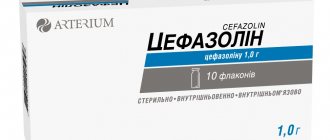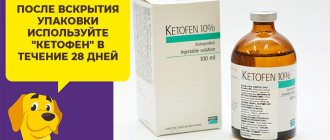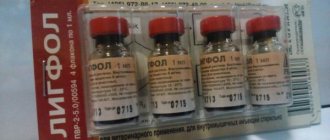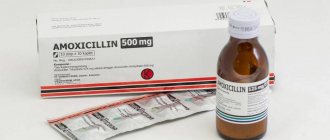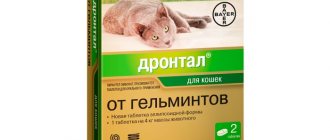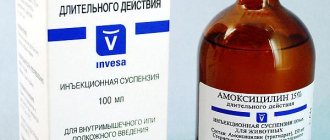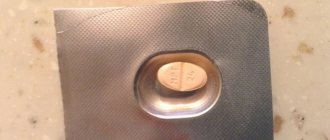Frontline for cats and kittens is used in the fight against ticks and fleas, as well as for preventive purposes. The product is available in the form of drops and spray in different dosages. The drug can be easily used at home. It has a superficial effect: it is not absorbed into the bloodstream, but is distributed over the surface of the skin and accumulates in the sebaceous glands. Of these, the drug is gradually applied to the skin, causing the death of parasites, which explains the high efficiency after a single treatment.
The active components of the product continue to act for a long time after application, making it possible to destroy all parasites and prevent the risk of re-infection.
All forms of the drug have the same effect and have an insectoacaricidal effect, which manifests itself in all phases of development of fleas, lice and ticks of various types.
Description of the drug Frontline for cats
The drug Frontline is a product used to eliminate and prevent the appearance of ecoparasites in cats and dogs. Frontline is effective against fleas, ticks, cheilitels, otodexodes, lice and lice. The drug is produced in France. It is produced in several forms, which gives cat owners the opportunity to choose a more suitable form for use.
The active substance that provides the insecticidal effect of the drug is fipronil. Frontline also includes additional components: butylated hydroxyanisole, ethanol, butylated hydroxytoluene and excipient.
Fiproline affects insect receptors by disrupting impulse transmission, which causes paralysis and subsequent death of parasites. After application, the drug accumulates in the hair follicles, epidermis and sebaceous glands. The active substance fipronil enters the pet's skin along with the secretion.
The effect is recorded 24-48 hours after treating the cat. During this time, all existing parasites on the animal’s skin die, and the drug is completely absorbed into the skin. The product has a prolonged effect and its protective properties last from 15 to 45 days. The duration of action of the drug largely depends on the size of the pet being treated, the characteristics of care and living conditions.
To prevent re-infection, it is necessary to treat not only the cat, but also the room in which it lives. Frontline in the form of a spray is suitable for treating your pet's favorite place.
Spot-On
This type of drug (drops) is a colorless transparent liquid with a slight specific odor. Drops are applied pointwise to the skin of an adult pet. Produced in the form of a 10% solution, packaged in 0.5; 0.67; 1.34; 2.68; and 4.02 ml in polyethylene pipettes with a break-off tip. The drug is packaged in 1 piece per package. Each blister is packed in a cardboard box. Before treatment, break off the tip of the pipette, spread the animal’s fur in the back area (between the shoulder blades) and, pressing the pipette, apply the solution to the skin at one or several points.
The drops do not have a skin-resorptive, sensitizing, embryotoxic, teratogenic or mutagenic effect. In case of contact with eyes, the product may cause mild irritation.
Combo
Frontline Combo is a drop with an improved composition. In addition to fipronil, the drug in this form also contains S-metropen, which is an analogue of juvenile hormone. The substance disrupts the synthesis of chitin, causes abnormalities in the development of insects in the egg and larval stages, and prevents the appearance of sexually mature insects on animals and in places where they are kept. Thanks to the improved composition, Combo is successfully used in advanced cases. The drug in this form is also used for prophylactic purposes to prevent re-infection of the cat.
Before treatment, break off the tip of the pipette, spread the animal’s fur in the back area (between the shoulder blades) and, pressing the pipette, apply the drug to the skin in the withers area. The lowest dose is 0.067 ml/kg.
Spray
Frontline Spray is produced, packaged in 100 and 250 ml plastic bottles of appropriate capacity with a spray head. The product belongs to the insectoacaricidal drugs of the phenylpyrosole group. The protective effect of the drug after treatment against fleas lasts 1-3 months.
The cat must be treated outdoors or in a well-ventilated apartment with the windows open, after removing cages with ornamental birds from the room and covering aquariums with fish. The cat may try to lick the product off. The drug must not be allowed to get inside, and to prevent this, the animal is put on a muzzle, a cervical collar, or the jaws are secured with a loop of braid. These products are removed after the coat is completely dry.
Before use, the spray should be shaken thoroughly, then the bottle should be held vertically, press the spray head, directing a stream of aerosol onto the surface to be treated from a distance of 10-20 cm. The dose of the drug, depending on the length of the coat, is 3-6 ml per 1 kg of animal weight.
You can easily dose the drug:
- one click on a bottle with a volume of 100 ml - 0.5 ml;
- one click on a bottle with a volume of 250 ml - 1.5 ml.
The spray needs to be applied to the entire body of the animal against the hair growth, slightly moistening the fur (in animals of long-haired breeds, the hair should be lifted with your hand). Covering the animal's eyes, treat the ears and chest, and lightly rub the medicine around the eyes and nose with your fingertips (wearing rubber gloves).
Until the fur is completely dry, keep the treated pet away from open fires and heating devices.
It is not recommended to bathe the cat 2 days before treatment, and also to wash and bathe in open water for 2 days after treatment with Frontline Spray.
Prices for Frontline for cats and kittens
The cost of the drug is determined by the shape and size of the container. Fluctuations in price in different regions of the country and in different pharmacies are insignificant. One 0.5 ml Frontline Spot On pipette costs about 400-500 rubles. The price of the flea and tick drug Frontline Combo varies approximately within the same limits.
Frontline spray costs an order of magnitude more than drops. The price for a bottle with a minimum volume (100 ml) ranges from 1000 to 1300 rubles. A medium-packed drug (250 ml) costs 1500-1800 rubles. The most expensive is a large bottle (500 ml). Its price reaches 2600 rubles.
Action
The drug Frontline, thanks to the active component fipronil, blocks the gamma-amino-butyric acid receptors of the parasite's nerve cells. The drug has a pronounced insecticidal and acaricidal effect against lice, fleas, lice and ticks (ixodidae, cheylitella, otodectos) that parasitize dogs and cats. As a result of nervous overexcitation, the parasite quickly dies. This happens within a period of 24 hours. But re-infection occurs continuously, since some of the parasites are not directly on the animal, but in the external environment.
To prevent continuous infection, the drug is used to treat the cat’s room, bed, or house.
Analogues of the drug
Analogues of the French drug Frontline are:
- Advantage drops. The products are manufactured in Germany. The medicine helps get rid of fleas, lice, and lice. Does not affect ticks.
- Spray Bolfo. German antiparasitic drug. Copes well with parasites. Valid for a week. Suitable as an additional product for treating residential premises.
- Fiprist spray is a cheaper analogue of Frontline. Used from one week of age.
- Stronghold. The main active ingredient is selamectin. It acts not only against fleas and ticks, but is also an effective drug against internal parasites. Does not protect against ixodid ticks.
Frontline aerosol and drops have long been successfully used to get rid of fleas and ticks in pets. You just need to remember that it is important to treat not only the cat for insects, but also all the animals in the house, as well as the house itself. The minimum is to wash the bed, vacuum it, and treat it with insecticides if necessary.
Instructions for use and dosage
Frontline medications should be used strictly according to the instructions, observing the dose and frequency of use:
- one pipette is intended for single treatment;
- Frontline ear mite drops should be applied directly into the auricle. 4-6 drops are dripped into each ear, after which the shell of the ear is folded in half and massaged at the base with light movements;
- The drug in the form of a drop should be applied strictly to the area between the shoulder blades, which will eliminate the possibility of licking the fur after treatment. You need to spread the fur and carefully squeeze the product onto the withers;
- Frontline in spray form should be applied in a pre-calculated amount depending on the weight of the cat and the volume of the spray;
- bathing reduces the effectiveness of the drug, and therefore it is advised not to bathe your pet in the first few days;
- treatment must be done for all pets living indoors;
- To treat very small kittens you need to use a spray, but from 2 months onwards it is more effective to use drops.
If, after treatment with Frontline, the cat’s parasite infection does not go away within 21 days, then most likely a re-infection has occurred. Infection can occur from other animals on the street, at home, as well as from the presence of eggs and insect larvae in the room where the pet lives, on the cat’s personal belongings or on upholstered furniture.
- Spot-On
The drug protects against ticks for 15-45 days, and against other insects for up to 45 days. The cat's fur must be clean and dry during the procedure.
Before treatment, the cat must be weighed, since the dose of the medicine depends on the weight. If the cat weighs no more than 5 kg, one standard pipette is required for treatment. To treat large breeds of cats, use 1.5 to 2 pipettes of the product. A single dose of the drug is 3-6 ml per 1 kg of cat’s weight, taking into account the length of the animal’s fur.
Drops should be applied specifically to the skin, and not to the coat. You need to protect your cat from contact with water for 48 hours. It is not allowed to pet or hug a pet. If the product enters the body, the cat may experience profuse salivation, which disappears after a few hours without medical intervention.
Frontline drops against ear mites are used once, 48 hours after treating the surface of the ears, the cat is allowed to bathe.
- Combo
Frontline Combo is administered to animals once by applying drops to dry, intact skin using pipettes of various packaging. The protective effect against ixodid ticks lasts up to 4 weeks, against fleas, eggs, flea larvae - up to 6 weeks. 1 pipette has a volume of 0.5 ml. If the animal is washed more than 2 times a month, it is recommended to reduce the interval between treatments to 3 weeks.
It is not recommended to wash animals within 48 hours after treatment with Frontline Combo, and you should not use other insectoacaricidal agents.
- Spray
Before applying the spray, shake the bottle well and spray the drug onto the cat's skin. After application, it is recommended to rub the product with light movements using your fingertips for complete and rapid absorption.
A single dose is 3-6 ml per 1 kg of pet's weight (6-12 presses on the sprayer), taking into account the length of the cat's fur. The amount of medicine depends on the volume of the bottle. A single press on a 100 ml bottle contains 0.5 ml of the product, and on a 250 ml bottle – 1.5 ml. The bottle should be kept at a distance of 10-20 cm from the animal, in a vertical position.
For kittens, use 1/5 to 1/3 of the adult dosage. For example, to treat a 1-week-old kitten, 1-2 presses on the sprayer are enough, for a month-old pet – 3-4.
Advantages
The benefits of the product include:
- Convenient packaging. Thanks to the pipette, it is easy to apply; the liquid does not get on human skin and does not leave marks on it. This type of packaging helps to accurately calculate the dosage of the medicine.
- Efficiency. The drug destroys all types of insects, even those that have managed to lay larvae on the skin of a pet.
- There are no age restrictions. The Frontline line of antiparasitic drugs includes 3 types of medicinal products with different compositions and specific purposes. Frontline spray can be used by kittens from two days of age.
- Fast action. The medicine kills parasites within 24 hours.
Advantages of the drug
The drug Frontline for treating the skin of cats and kittens is considered the most effective means for combating parasites.
The main advantages of the drug include high quality, reasonable price, effectiveness and lack of toxicity. The advantages of this product also include the absence of contraindications, the possibility of use during pregnancy and lactation, and the possibility of using the drug to treat kittens starting from two months of age.
Another advantage of the antiparasitic agent is the duration of the protective effect. After treatment, the cat will be protected from parasites for 21 days, and from fleas for about 1.5 months.
A spray is considered a popular and economical option. One bottle of Frontline is enough for a year of regular use. This drug is a frequent choice of cat breeders, as well as owners with more than one pet.
Advantages and disadvantages of each product
It is not for nothing that the developer has provided 3 forms of the drug Frontline for cats. The fact is that each form has its own advantages and disadvantages. The veterinarian will prescribe exactly the form of the drug that is suitable for your cat. Some owners choose drops or spray on their own.
Choosing a flea and tick remedy is a very important point in protecting your cat, especially when it comes to the warm season. When my pets need a drug for prevention, I choose the drug myself (an important point here is the price of the drug). But if infection has already occurred, it is still better to contact a veterinarian. Sometimes I just call our regular veterinarian and ask for advice. Veterinarians know better than others about various new products and trends in this area. In addition, the veterinarian directly receives feedback from cat owners who have encountered the pros and cons of the medications.
You need to buy not the product that “turned up” in the veterinary pharmacy, but the one that is suitable in a particular case
Comparison table: pros and cons of different Frontline drugs
| Name | pros | Minuses |
| Drops Spot It | convenient application (does not get your hands dirty), low price, sold in many pharmacies, effective against ear mites | pipettes contain a small volume of solution that can spill (application of a smaller volume may negatively affect the effectiveness) |
| Drops Combo | convenient application, multifunctional (destroys both adult parasites and larvae) | small pipettes, presence of a specific odor |
| Spray | economical (enough for a whole year with regular use), the ability to bathe and walk the cat, effectiveness (distributed throughout the body) | high price, likelihood of human contact with the solution and allergies to alcohol-containing substances, the cat may be scared of splashes |
Contraindications and side effects
Frontline is extremely toxic to rabbits. It is not allowed to use the product on kittens under 8 weeks of age and babies weighing less than 1 kg. The drug should not be used for pets who are weakened after serious illnesses, or if there are lesions on the cat’s skin.
The use of Frontline is not recommended for:
- individual intolerance to the components of the product;
- hypersensitivity to the components of the drug;
- allergic reactions.
Side effects from using Frontline medicines are rare. The animal's skin in the area where the drops are applied may temporarily become discolored or red, hair may fall out, or itching may occur. Allergic reactions can be eliminated by bathing the cat with shampoo and giving antihistamines.
Scope
Fipronil belongs to the category of phenylpyrazoles. It has a wide range of applications and has the property of being slightly soluble in water. Its main properties are:
- blocking nerve receptors of parasites; the product is evenly distributed over the cat’s skin, but is practically not absorbed and does not penetrate the circulatory system; causes diseases of the nervous system in arthropods; tends to gradually accumulate in the sebaceous glands of a pet and, as a result, has a long shelf life; according to the degree of danger it belongs to the third class, which is a moderate risk; Despite the declared safety, it cannot be used to treat rabbits, because fipronil is toxic to them.
“Fiprist” for cats, the instructions confirm this, can be successfully used on ferrets. The product fights against fleas, ticks and lice-eaters. Can be used as a treatment for infected animals and as a preventive measure.
How to distinguish the original Frontline from a fake?
Frontline is a sought-after and popular drug, sold in many countries around the world. Like other effective medicines, it is also often counterfeited for profit.
You can distinguish an original from a fake if you know certain differences between them.
- Even single doses of the product are packaged in individual cardboard boxes. If a pet pharmacy offers to purchase a separate plastic pipette, explaining this as a wholesale purchase from the store in order to reduce the cost of products, it is advised to refuse the purchase.
- The original Frontline drops have their logo (on the dropper).
- The original box contains an indication of the batch number and the specific date, as well as the expiration date. The lot number must be indicated on the plastic applicator.
- Each package contains an insert with detailed instructions for use and information on first aid for your cat if side effects occur.
- The applicator is additionally sealed in plastic to protect it from children.
- There are no holograms or stickers on the packaging.
- On the back of the applicator you can find the name of the manufacturer Merial, the name and shape of the product, a note stating that the drug is for external veterinary use only, the concentration of the active component, and the amount of solution in the pipette.
Products imported to the Russian Federation from France (the drug is manufactured in France) may bear the PCT mark. The appearance of paper boxes from different batches may differ; in particular, manufacturers change the color design and photographs of cats.
Possible side effects of Fiprist for cats
The instructions and reviews from cat owners indicate that if you follow all the recommendations, there should be no negative consequences. But it is necessary to remember about individual cases of allergic manifestations. If they start after using the product, you should immediately stop using it and wash the treated areas with soap and water. If your cat's health worsens, you will need to consult a veterinarian who may prescribe absorbent agents. Desensitizing treatment may be needed.
In addition to individual intolerance, the drug has the following number of contraindications:
- prohibited for use in kittens less than two months old; Treatment of emaciated or sick animals is not recommended; simultaneous combination with similar drugs can cause overdose and intoxication.
Are Frontline drugs safe?
- If the doses and rules of use are followed according to the instructions, the drug Frontline can rarely cause a negative reaction in the cat’s body, except in cases of individual intolerance to the components of the product in animals.
- However, when using the spray, the animal may experience short-term shortness of breath due to the large amount of liquid entering the animal's lungs.
- A double dose of the product, which the pet owner can use to enhance effectiveness, can harm the cat. The active component fipronil, in overdose, can cause tremors, convulsions and ataxia.
- If a kitten is treated with a single dose, there is a risk of developing intoxication.
- To prevent the drug from getting inside, it is recommended to put a protective collar on the animal, at least for a few hours.
Features of application
While the animal is being processed, do not eat, drink or smoke. If liquid gets on the mucous membranes, remove it with a cotton swab and rinse with water. If redness occurs, consult a doctor.
To dispose of the drug, it must be placed in a plastic bag. It is not forbidden to throw it into the garbage chute along with regular household waste.
In cases where the drug has not been used, it is better to pour the remains into the sewer. Please note that the components of the product are toxic to amphibians.
Analogs
In case of individual intolerance to the components of the drug Frontline, the veterinarian may recommend the use of its analogues:
- Barrier-super;
- Leopard;
- Bleach;
- Fiprist;
- Broadline Spot-On;
- Celandine.
Doses and method of administration
Before treatment, remove the tip of the pipette, then spread the animal’s fur in the back area (between the shoulder blades) and, pressing the pipette, apply the drug to the skin at several points, in places inaccessible to licking by animals. Repeated treatments of animals are carried out according to indications, but not more than once every two months against insects and not more than once a month against ixodid ticks. In order to prevent re-infestation by fleas, the animals' bedding is replaced or treated with a preparation.
Answers to popular questions
Many cat owners are interested in questions related to the nuances of using Frontline. Since the cat is a member of the family, and the health of the pet is under the close attention of the owners, they are looking for answers to their questions related to the treatment of the cat’s skin and further actions.
- Is it possible to scratch after treatment?
After treatment, touching the cat is not allowed. The procedure must be carried out with rubber gloves to prevent contact of the substance with your hands. The drug is applied to the clean skin of the cat, from where, due to its accumulative properties, it is gradually absorbed into the sebaceous glands, mixed with skin secretions and acts on parasites, causing their death. If you scratch your cat after applying the drug, microcracks may form, through which the product will enter the bloodstream and cause a negative reaction.
- Can it be used on a dog?
It is perfectly acceptable to use Frontline on a dog. The manufacturer produces a separate type of drug in the form of a spray and drops, intended for treating dogs. The amount of medication used depends on the dog's weight.
- Is it possible to divide by less?
When separating the contents of the pipette, there is a risk of violating the dosage of the active component and the alcohol-containing element, which will lead to the ineffectiveness of the medicine.
- Is it okay for pregnant cats?
The drug Frontline has been tested in clinical conditions and is considered an absolutely safe treatment for cats during pregnancy.
- Is it possible to put drops in the ear?
You can put Frontline drops into your ear if you are infected with ear mites. The procedure must be performed by a veterinarian in a clinic setting. The ears must be clean so that no dirt remains deep in the ear.
To treat ear mites, a spray is also used, which is sprayed into the auricle after preliminary cleaning.
- Is it possible to pet a cat?
Touching a treated cat is prohibited, especially for children and people prone to allergies. The cat should not be petted until the area where the drug is applied is completely dry (about 24 hours). It is not allowed to take a treated animal into bed.
- Is it possible to wash a cat?
Bathing with (or without) shampoo 1 hour before treatment does not affect the effectiveness of the drug, provided that the pet’s fur and skin are completely dry. Washing or bathing the cat is allowed 48 hours after treatment.
Contraindications
According to the instructions for use, Frontline for cats is a harmless drug if applied correctly. It has few contraindications. This is why anti-parasite drops and sprays are popular with many owners of fluffy cats. The main obstacle to the use of any form of Frontline (Spot On, Combo, spray) is individual intolerance. If your cat develops symptoms of allergies, irritation, or changes in behavior under the influence of the medication, you should show it to the veterinarian and change the drug.
It is recommended to use the drug with extreme caution for weakened or sick animals. There is another temporary contraindication – deworming. It is not advisable to combine two procedures in one day. At least 10 days must pass between them so that the body does not suffer from the single action of a large amount of toxic substances. This warning applies to any flea and tick product.
Is Frontline suitable for pregnant cats and kittens?
Fipronil and S-methoprene belong to the group of low-toxic substances. They do not penetrate the bloodstream, but accumulate only in the dermis. The drug does not have a teratogenic or mutagenic effect. Therefore, the product is allowed to be applied to the body of pregnant cats and kittens.
A very small kitten should be treated for fleas and ticks only if absolutely necessary. For example, if he was picked up on the street. If the cub is breastfed, then you should remember that traces of medicine from its fur can enter the body of the mother cat when licked. Therefore, it is worth assessing the feasibility of treating a baby with Frontline.

